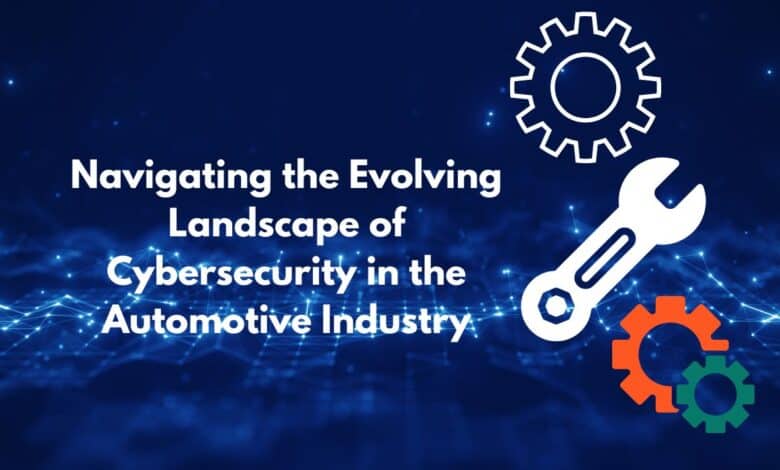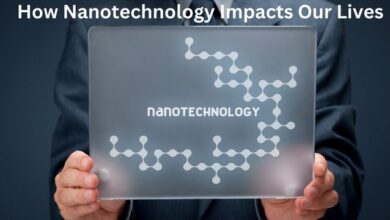Navigating the Evolving Landscape of Cybersecurity in the Automotive Industry
Explore cybersecurity in the automotive industry: risks, solutions, and advancements for safer vehicles. Stay informed and protected.

In the rapidly advancing world of technology, one sector that is undergoing a significant transformation is the automotive industry. As vehicles become more connected and autonomous, the need for robust cybersecurity measures has never been more critical. This article aims to guide you through the evolving landscape of cybersecurity in the automotive industry.
The integration of digital technology into vehicles has opened up new avenues for innovation but has also introduced new vulnerabilities. Cyber threats can range from data breaches to the remote hijacking of vehicle controls, posing significant safety risks. As such, navigating this complex landscape requires a comprehensive understanding of both the opportunities and challenges presented by these advancements.
Key Takeaways
- The modern automotive industry faces unique cybersecurity challenges with the rise of connected and autonomous vehicles.
- Securing Vehicle-to-Everything (V2X) communications and consumer data is essential for the credibility of the automotive sector.
- Collaboration across industry players and nations is critical for bolstering automotive cybersecurity measures.
- Emerging cybersecurity standards are shaping the future of global automotive compliance and security.
Importance of Cybersecurity in Connected Vehicles
As the automotive industry advances, integrating technology into vehicles has enhanced the driving experience and transformed cars into high-functioning connected devices. This surge in connectivity unlocks numerous benefits, such as improved performance, convenience, and navigation, yet also opens vehicles to cybersecurity threats that could compromise personal data and passenger safety. As such, understanding and bolstering cybersecurity measures becomes paramount for automakers. Industry captains like Fortinet China have recognized this importance, driving initiatives to escalate vehicle security to combat rising cybersecurity threats.
It isn’t simply about defending against malicious attacks; it’s about ensuring a resilient infrastructure that can survive and rapidly recover from disruptions. The reality of the digital era means vehicles are not standalone entities but nodes in a vast network of interconnectivity that includes other cars, roadway infrastructure, and even pedestrians. This necessitates a comprehensive approach to security that is layered, sophisticated, and can pre-emptively identify potential threats before they emerge.
Cybersecurity Measures for Vehicle-to-Everything (V2X) Communications
At the frontier of automotive technology, Vehicle-to-Everything (V2X) communications herald a new era where vehicles interact seamlessly with their surroundings, from other cars to road infrastructure, enhancing situational awareness and improving road safety. However, the systems enabling this sophisticated interaction level expose vehicles to cyber risks. Securing these communications networks demands strict protocols and robust encryption techniques. Manufacturers must ensure that any data transmitted via V2X channels is safeguarded against interception and exploitation by employing robust cybersecurity frameworks and continuously monitoring for vulnerabilities.
The Impact of Autonomous Driving on Cybersecurity Protocols
The push toward fully autonomous vehicles introduces unprecedented challenges in cybersecurity. An autonomous car is an integrated ecosystem densely packed with sensors, processors, and software that demands constant and vigilant protection. Pioneering firms have emphasized the importance of layered defense mechanisms that are both diverse and adaptive, capable of repelling cyber-attacks and safeguarding the intricate web of autonomous operations. Proactive security measures, including real-time threat assessment and predictive analysis, become indispensable as these vehicles emerge on public roads.
Data Privacy and Protection in the Auto Industry
The intimate connection between vehicles and their drivers’ personal lives means that modern cars handle copious amounts of data, from location history to personal contacts. Ensuring the confidentiality and integrity of this information is not just a legal requirement under data protection laws but also a cornerstone of consumer trust. Automakers must rigorously adhere to these data protection standards and transparently demonstrate their capacity to protect user data, fostering robust customer relationships based on trust and security.
Building Resilience Against Automotive Cyber Threats
In an environment where cyber threats are ever-evolving, resilience has become a keyword in the automotive industry’s lexicon. Measures taken to bolster resilience should involve more than robust defense mechanisms and strategies for rapid recovery and mitigation in a cyber incident. The role of resilience planning embraces both preemptive measures for threat avoidance and reactive strategies to minimize damage should a breach occur. Investment in comprehensive cybersecurity resilience can dramatically reduce the potential for financial, reputational, or operational damage.
Collaborative Efforts in Strengthening Automotive Cybersecurity
The vast and interconnected landscape of automotive cybersecurity cannot be navigated alone. Security Magazine discusses the increasing attention that the industry is giving to collaborative efforts to enhance cyber protections. Such initiatives involve sharing critical intel on vulnerabilities and threats between companies and governmental bodies and establishing a cybersecurity network that benefits all members. Industry-wide cybersecurity collaborations can leverage collective knowledge and resources to formulate and adopt comprehensive defense strategies to secure today’s and tomorrow’s vehicles.
The Future of Cybersecurity in Electric Vehicle (EV) Systems
With electric vehicles poised to dominate the future of transportation, their distinct technical frameworks present unique cybersecurity challenges. Critical features, including battery management systems and charging infrastructure, become potential targets for cyber attackers. It’s imperative for the industry to not only anticipate these new forms of threats but also to evolve cybersecurity protocols tailored to protect the intricate and novel technologies inherent in electric vehicles.
Integrating Cybersecurity into the Automotive Supply Chain
Cybersecurity extends beyond the vehicle, encompassing the entire automotive supply chain, from the early design stages to after-sales support. Each element introduced into a vehicle—from the most miniature sensors to complex onboard computing systems—carries the potential to introduce security vulnerabilities. It becomes critical for manufacturers to adopt stringent cybersecurity evaluations and protocols at each stage of the supply chain, vetting partners and suppliers to ensure compliance with rigorous security standards and thus securing the entire vehicle lifecycle.
Educating Consumers on Automotive Cybersecurity
Consumers are the final and most significant link in the cybersecurity chain. The best defense systems in the world can be compromised by simple human error or lack of awareness. Therefore, the automotive sector is responsible for educating vehicle owners on best practices for cybersecurity. Making consumers aware of their role, from keeping their vehicle’s software up-to-date to recognizing phishing attempts, can significantly enhance the overall security posture of the automotive ecosystem.
Evolution of Cybersecurity Standards and Protocols in the Automotive Field
As the fabric of automotive technology becomes increasingly complex, the need for standardized cybersecurity protocols and practices becomes critical. Such standards can serve as a universal language across global markets, providing clear directives on securing vehicles from cyber threats. Automotive News sheds light on the shifting landscape with its detailed analysis of the Latest Cybersecurity Challenges in the Automotive Sector. Embracing these evolving standards ensures that manufacturers remain consistent and rigorous in their cybersecurity efforts, contributing to the collective security of the automotive domain.




